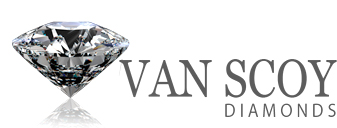Purchasing A Loose Diamond And Designing Her Diamond Engagement Ring
By: Vanscoy Diamonds
Congratulations! You’ve decided to propose to your girl, but first – the ring! If you’ve already decided to purchase a loose diamond and design your own diamond engagement ring, you’re making a wise choice. You’ve already figured out that the center diamond is going to be the most expensive and valuable part of the ring, and for that reason you know that purchasing a loose diamond just makes good sense. By purchasing the diamond first, you can follow up with a setting that will showcase the stone beautifully. Before you set out to purchase a loose diamond, however, make sure you have done your homework and have a good feel for what you need to look for. This is probably your first time purchasing a loose diamond, but don’t be intimidated. It’s easy enough to familiarize yourself with diamond qualities before you buy. The more you know about the diamond you’ll be buying, the more you can enjoy the process. Learn all you can about diamond size, quality, and color. Begin with the basics, – the four C’s: Cut, Color, Clarity and Carat weight, and don’t be afraid to ask the jeweler you work with for advice throughout the process. Your online diamond jeweler is available to answer your questions. You will quickly discover just how beautiful and fascinating diamonds are, with each one bringing something unique to the buyer. Finding the perfect diamond around which to build your bride-to-be’s diamond engagement ring will mean so much more to her when she realizes that you chose a diamond especially for her, one that she will wear every day for the rest of her life. To begin with, when you are considering the 4C’s (cut, color, clarity and carat weight,) remember each of these four categories is graded in each diamond you will look at. The grade a diamond receives in all four categories will determine its price and value. By gaining an understanding of the basics of diamonds and how to determine their quality, you’ve already put yourself at an advantage when it comes to purchasing a loose diamond. Cut Cut is thought to be the most important characteristic of a diamond. The cut has a considerable amount of influence on the diamond’s appearance and attraction; whether it is machine cut or cut by hand, the cut of the diamond creates its shape and facets. Keep in mind, the cut of a diamond does not refer to its shape. Diamonds can be cut into shapes such as heart, pear, oval, marquis, pear or round, while the cut of the diamond determines the amount of light reflected from the diamond, and therefore its sparkle. Color White (clear) is the most common diamond color, with the term “color” referring to the diamond’s whiteness or absence of color. A grade of D is the highest possible color grade a diamond can have, while a grade of Z is the lowest. Van Scoy Diamonds carries high quality loose diamonds with color grades ranging from D to J. Clarity Almost every diamond has tiny imperfections or inclusions, most of them not visible to the naked eye. The size and number of these imperfections are what give the diamond its clarity. A FL or IF clarity grade is the highest (FL stands for flawless, IF stands for internally flawless). Flawless or internally flawless diamonds are extremely rare. Carat Carats describe the units used to measure the weight of a diamond, which does not always reflect in the size of the diamond, since the weight of a diamond isn’t always distributed equally. A smaller brilliant cut diamond with a large surface may appear larger than other diamonds that actually are larger. Any time you buy a loose diamond, make sure you are only looking at certified loose diamonds. Certified loose diamonds have been graded by an independent third party laboratory to determine the stone’s quality based on universal, standardized criteria. Van Scoy’s Diamonds sells only Gemological Institute of America (GIA) certified diamonds, considered the most respected diamond grading laboratory in the industry. It is the GIA that sets the standard for diamond grading. Diamonds that are the same carat weight, shape, color and clarity can still vary greatly depending on the laboratory that issued that particular diamonds certificate. The scales of color and clarity that are referred to when grading diamonds were developed by the Gemological Institute of America (GIA). All laboratories use this scale, although not all use it to the same standard. What one laboratory grades a diamond for color and clarity may not be what another laboratory grades that same diamond. This is why it is important to compare prices based on the same certificate. Diamond grading is somewhat subjective, and the grader uses his or her own discretion with each diamond. Since price is directly related to quality factors like color, clarity and cut, accurate and honest grading is essential. Remember, diamond certificates are not given to diamonds under .5 carats.


